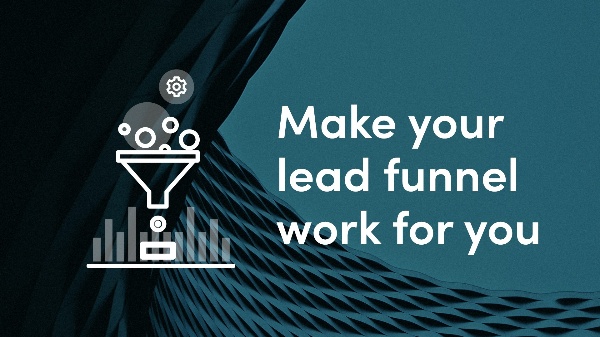Add Your Heading Text Here

In today’s competitive digital landscape, having an optimized lead generation process is crucial for turning prospects into paying customers. Whether you’re in the B2B or B2C space, lead generation is the lifeblood of your business. A strong lead generation strategy doesn’t just fill your pipeline—it sets the foundation for sustainable growth. So how can you optimize this process to ensure your efforts translate into more leads, quicker conversions, and long-term success?
Let’s break down four essential steps you can take to refine your lead generation process.
1. Clearly Define Every Stage of the Funnel and Team Responsibilities
A well-structured lead funnel is essential to any effective lead generation process. The lead funnel typically spans the journey from initial contact to conversion, involving various marketing and sales touchpoints along the way. But for your lead funnel to perform at its best, each stage needs to be clearly defined, along with who is responsible for managing it.
For instance, in most businesses, Marketing handles the upper funnel stages, which include awareness and nurturing, while Sales takes over during the middle and bottom funnel stages to close the deal. It’s essential to establish when and how leads are passed from marketing to sales, as well as the key performance indicators (KPIs) at each stage.
At this point, Marketing Qualified Leads (MQLs) become Sales Qualified Leads (SQLs), and it’s critical to ensure both teams have a clear understanding of the handover process. Miscommunication here can cause leads to cool off or even disappear from the funnel altogether, leading to lost opportunities.
Actionable Tip:
Create a flowchart that visualizes your funnel stages and highlights team responsibilities. By doing so, both Marketing and Sales will be clear on their roles, ensuring leads are properly nurtured through each stage.
2. Tailor Content and Communication to Fit Lead Status
Once your funnel is clearly defined, the next step is delivering the right message at the right time. Not all leads are created equal, and they are often at different stages in their buyer’s journey. The content and offers you present should be aligned with their level of interest and engagement.
Marketing leads, managed by the Marketing department, are in the initial stages and need nurturing. Your goal here is to provide valuable content that helps to move them closer to the decision-making stage. Blogs, newsletters, ebooks, and social media campaigns are great tools to build awareness and trust with cold leads.
For Sales leads, who are further down the funnel, the communication becomes more personalized and offer-specific. Once a lead moves into the SQL stage, the messaging should focus on closing the deal—whether it’s through personalized product demos, special offers, or one-on-one consultations.
Actionable Tip:
Segment your email list based on lead status, and create tailored drip campaigns for each segment. The more personalized your content, the more likely it will resonate with leads at different stages of the funnel.
3. Use Rejected Leads to Learn and Improve
Rejected leads might seem like failures, but they are opportunities in disguise. Every lead that fails to convert can provide valuable insights into areas of improvement in your process. Whether it’s your messaging, targeting, or lead nurturing strategy, there are always lessons to be learned from leads that don’t make it to the finish line.
When leads are rejected, evaluate the reasons with your Sales and Marketing teams. Was the lead passed over because they weren’t qualified? Was the messaging misaligned with their needs? Understanding why a lead didn’t progress can help you tweak your process, improve targeting, and refine your approach.
Additionally, rejected leads shouldn’t be abandoned entirely. They can often be re-engaged with targeted content down the line. By continuing to nurture rejected leads with relevant, valuable content, you might see some of them re-enter the funnel as warmer prospects.
Actionable Tip:
Hold regular review sessions between Marketing and Sales to go over rejected leads and assess the reasons for rejection. Use this information to adjust your campaigns, refine your buyer personas, and enhance your lead qualification process.
4. Prioritize Hot Leads with Fast Turnaround Times
In the world of lead generation, timing is everything. Hot leads—those that have shown clear interest in your product or service—should be treated with urgency. In fact, studies have shown that responding to leads within five minutes makes you nine times more likely to convert them.
Leads that have downloaded gated content, requested a demo, or filled out a form are clearly indicating they’re interested in what you have to offer. This is your opportunity to act quickly, providing them with the right information or setting up a call while their interest is still high.
However, if you delay your response, that hot lead can quickly cool down, or worse—move on to a competitor.
Actionable Tip:
Set up automated email responses and notifications to ensure that hot leads are followed up with immediately. Equip your sales team with tools like CRM systems that can help manage lead follow-ups and track engagement in real-time.
Conclusion
Optimizing your lead generation process requires continuous assessment and refinement. By defining your funnel stages clearly, tailoring your communication to each lead’s stage, learning from rejected leads, and responding quickly to hot prospects, you can transform your lead generation efforts into a powerful revenue driver.
When all teams work together with a common goal and a well-optimized strategy, your lead generation funnel can become the foundation of your business growth. Take the time to implement these steps, and you’ll be well on your way to converting more leads into loyal customers.

